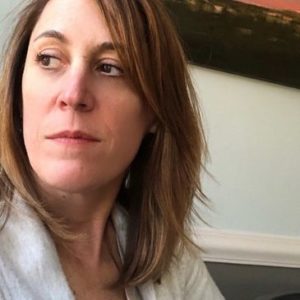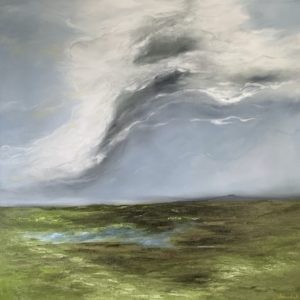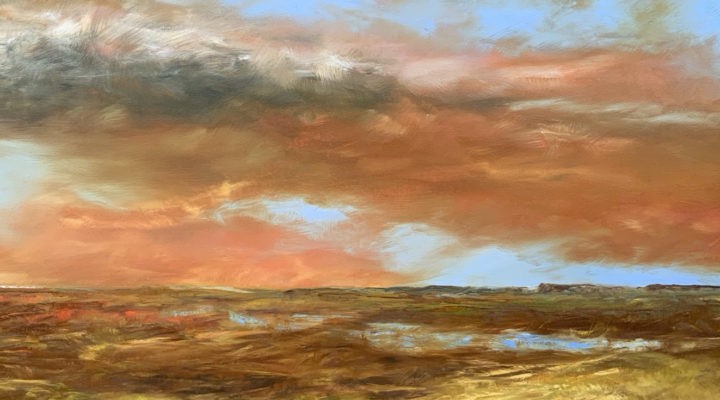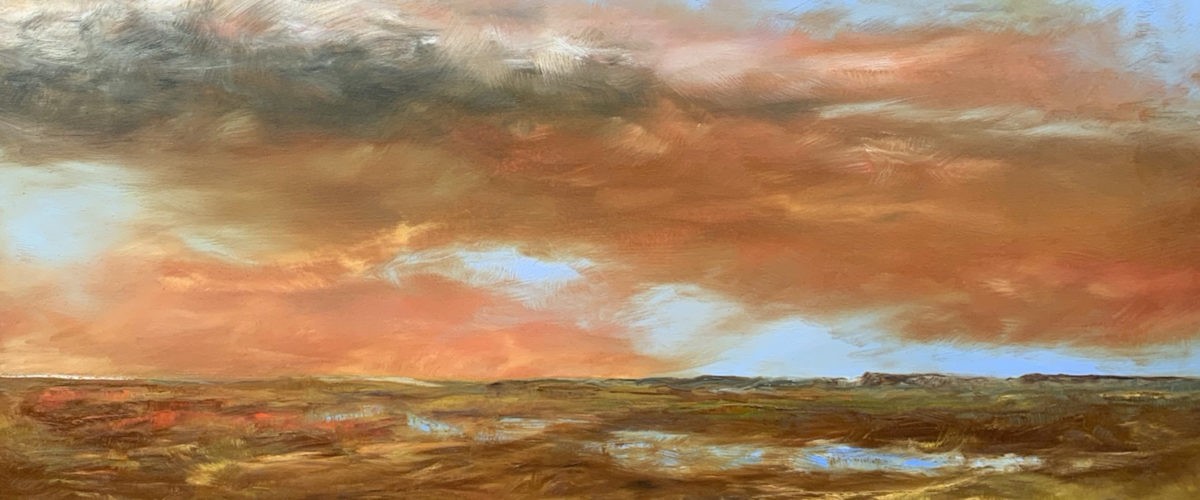Shawn Marshall paints serene landscapes that bring calm to corporate offices, galleries and homes. These meditative images, however, are a way for her to continue processing the chaos of childhood years spent in a war zone as a child of Southern Baptist missionaries.
Her parents, Bill and Alice Marshall, were Southern Baptist missionaries stationed in Nicosia, Cyprus; Beirut, Lebanon; and Munich, West Germany. The family lived in Beirut during the Lebanese Civil War and witnessed firsthand the atrocities that led nearly 1 million people to flee the country.

Shawn Marshall
On top of that, as a child Marshall suffered a kidney condition that required three surgeries before age 5, and she was in and out of the hospital. This stress-filled childhood took a turn when she was 8 years old and the family moved back to the States, a country she did not know and where she experienced profound culture shock.
Creating art “is one of the ways I’m dealing with the past,” explained the Louisville, Ky., resident. Missionary kids today have access to counseling and other resources that were not available in those days. “When we came back, there was no counseling and added to that they thought the youngest (her) wouldn’t remember.”
What she now knows as an educator is that “the younger you are, when you can’t verbalize it, you internalize it.”
“My paintings help me. It’s a meditative practice for me,” she explained.

“Spring Eternal.”
She learned a love of art from her parents, who regularly took her and her siblings to museums and concerts and theater. “My dad and I loved the Impressionists. … I just knew from a young age I wanted to be a painter.”
However, that was not a practical option as she headed off to college in the late 1980s, so she became an architect, earning bachelor’s and master’s degrees in architecture from the University of Kentucky and Cornell University. The master’s degree also afforded a minor in fine art.
She worked successfully as an architect for 20 years and found that profession highly stressful and competitive. “I call myself a recovered architect,” she joked.
Eventually she became a teacher and in that new life finally found time to explore her passion for art. She started not in painting, however, but in sculpture. It was not until 2009 that she had her first solo show as a painter.
In that discipline that now is her passion, she is self-taught. Upon the advice of a friend, she began painting with a palette knife because of the similarity of applying paint just as the sculptor applies plaster. Later, she learned to use the brush, and now she employs both techniques.
The majority of her works are landscapes, which is intentional.

“Solstice Storm”
“I have always loved traveling, and that was fed to me from early on with my parents. What I loved is the different landscapes we were able to see. I’ve always been mesmerized by the vastness of it all. It puts you in a place to understand we are all small. And you can’t ever get to the horizon you see.”
Thus, painting landscapes has “become a metaphor for hope,” she said.
Her gauzy, color-filled landscapes are all “inspired by reality,” she explained, “but they’re mostly imagined places. I think about color a lot and go from there and start with the sky. If I’m painting from a place I’ve been, it’s still an abstract view, mostly impressions. They’re never representations.”
The greatest compliment viewers give her is to say they feel a sense of calm in her work. That is her objective — and it is her own experience in creating the work.
“Painting is one of the few places when I’m actually in the moment and not stressed about something that’s happening. It is calming to me because I am truly immersed in the moment. I lose myself in that, in the colors and the landscapes, and I find a lot of joy in that.”
Some might call this a spiritual experience; she calls it “meditation.”

“February Mist”
“I have had to learn how to trust myself and deal with anxiety,” Marshall explained. “I feel most connected when I’m outside or painting or traveling. It’s a practice of letting go and trusting when I paint. And it’s a constant practice, which is a life lesson.”
There are times, though, when she wonders if this is enough.
“I spend time worrying about what is the relevance of my work right now. I’m not reflecting what’s happening,” she said, referencing other artists who are able to make social commentary through their work.
That’s not her calling, though. She’s experienced enough of life’s harshness and wants to offer others a respite of calm in a hope-filled horizon that never ends.
That calming work now graces private collections all over the United States and several corporate collections, including Brown-Forman Corporation, PNC Bank, Commonwealth Bank and the University of Kentucky. She maintains a website and is represented by Viridian Artists in New York City, Kore Gallery in Louisville, and New Editions Gallery in Lexington, Ky.

“Autumn Skies”
Related articles:
Q&A with Daniel Bonnell on conveying the sacred in modern art
Covering nudity in art reflects Church’s unwillingness to discuss important issues, say pastors


